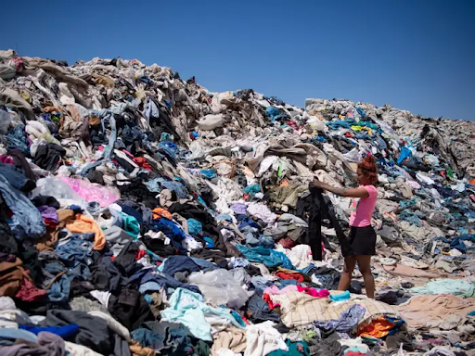The Problem with Fast Fashion
In today’s economy, fast fashion engrosses about $68,634.9 million a year. The styles and designs they feature come and go in order to keep up with the trends. China, Bangladesh, Vietnam, and Indonesia, among other Asian countries, largely make up the production of fast fashion.
The major appeal of fast fashion is that it’s cheap. Corporations offer financially-friendly prices to consumers in order to sell fast. This is great for the buyers and the sellers, but not so much for the producers.
The workers are forced to work fast to keep up with the production rate. The clothing is cheap because their wages are decreased. These workers, often women and children, are exploited by corporate greed because of the country they live in. Child labor is a huge problem in the fast fashion industry.
This unfair treatment has caused an uproar among the workers, spurring them to hold protests and even refuse to work if they are not paid more.
Corporations are the major problem, but so are the consumers who support them. Some of our favorite brands like Zara, H&M, Forever 21, and GAP use fast fashion to produce their products. Some people know the truth behind where they get their clothes and still buy from them, while others depend on these brands because they are affordable. “Forever 21 was my favorite store but I stopped buying from them when I found out,” says freshman Evelyn Marie.
Consumerism is a large problem because the trends are always changing and people always want more. They want new stuff every month, and the companies have to keep up with that. They are staples in society that no one seems to be willing to change.
Shein is a popular online shop that utilizes fast fashion that garners thousands of customers a year. “At any normal store a plain tee would be $25. On Shein it’s $4,” says senior Katie Eisenberg. The appeal of the cheap prices is the problem. Not many are going to refuse a deal like that, so these brands are just going to gain more and more customers.

Not only does fast fashion have a negative impact on the workers, it also affects the environment. The industry uses about 93 billion cubic meters of water annually, which will only increase every single year. Clothing production is also responsible for 10% of total global carbon emissions.
To keep costs low, the clothes are made out of low quality synthetic fibers, often mixed with plastic. Textile-making actually counts for 15% of total plastic use, with very little recycling going on to make up for it. When the clothes are thrown away, the microfibers of the plastic will pollute the earth.
Since the clothes are made, bought, and “used” at a rapid pace, there is tons of waste. To be exact, 92 million tons of textiles are wasted annually. They end up in landfills, in the ocean, or burned, almost never recycled. Clothes that were never even sold account for this.
Fast fashion is a large problem that is not going to be fixed anytime soon. Too many people depend on it. Too many will permanently work in the industry. What activists can do is organize protests, petitions, and not support these conglomerates that we are all a victim of.
Your donation will support the student journalists of North Hollywood High School. Your contribution will allow us to purchase equipment and cover our annual website hosting costs.

